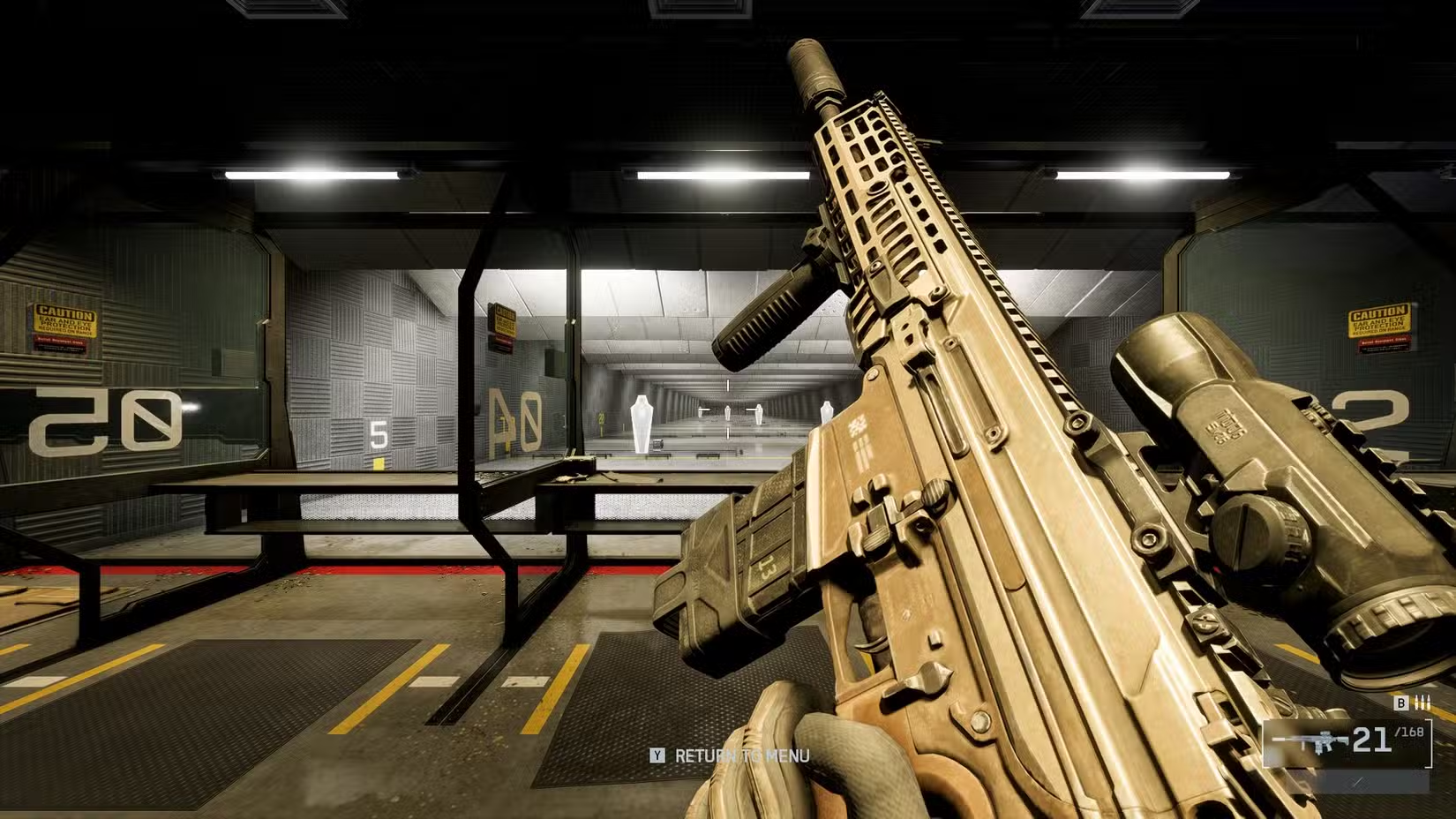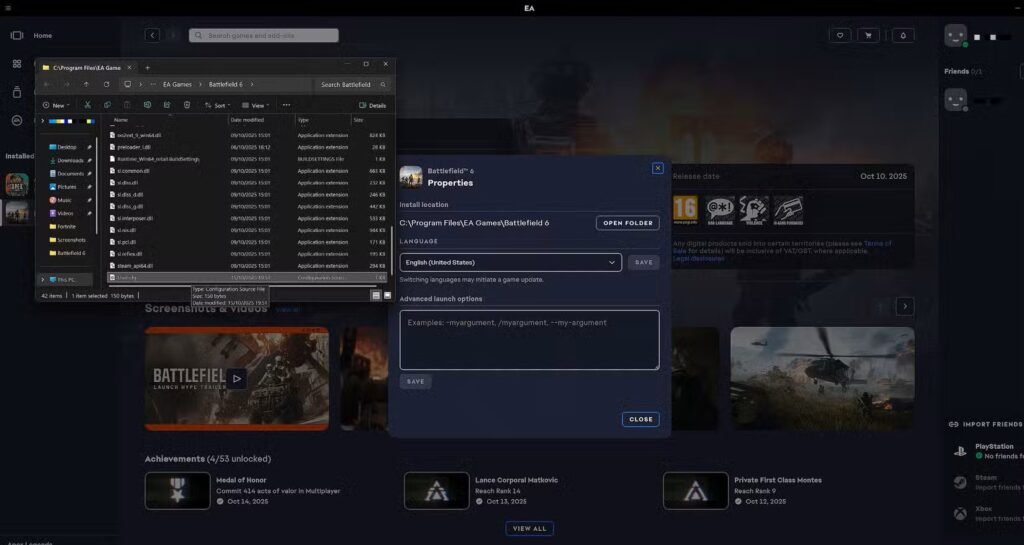
Newsletter Subscribe
Enter your email address below and subscribe to our newsletter

Enter your email address below and subscribe to our newsletter
Your Source for Game News and Guides

Fix high CPU usage in Battlefield 6 with our step-by-step guide. Learn the proven User.cfg method, optimize graphics settings, and reduce performance issues on PC.
Battlefield 6 has been a massive success since launch, bringing players back to the franchise’s large-scale warfare roots with stunning visuals and engaging gameplay. However, the game’s demanding nature has created a significant problem for many PC players: excessive CPU usage that causes stuttering, frame drops, and even system instability.
If you’re experiencing maxed-out CPU usage, poor frame times, or your cooling fans sound like a jet taking off during matches, you’re not alone. This issue has affected players across various hardware configurations, from mid-range systems to high-end rigs. The good news? There’s a proven fix that has worked for thousands of players since the Battlefield V days.
Let’s walk through the most effective solution step-by-step, along with additional optimization tips to get your game running smoothly.
This fix works by manually configuring how Battlefield 6 distributes workload across your CPU cores and threads. Originally discovered by Reddit user TheHeavySoldier for Battlefield V, this same solution has proven highly effective for Battlefield 6’s CPU usage problems.
What this fix does:

Before creating the configuration file, you need to know your CPU’s exact core and thread count.
Method A: Using Task Manager (Quick Method)
Example: AMD Ryzen 7 3700X shows 8 cores and 16 logical processors
Method B: Manufacturer Website (Intel Users – IMPORTANT)
For Intel CPUs, especially 12th gen and newer with Performance/Efficiency core architecture, Task Manager numbers can be misleading. Instead:
Why this matters: Intel’s hybrid architecture can confuse the game’s thread management. Using actual P-core counts prevents the game from improperly utilizing E-cores.
Now that you have your CPU specifications, let’s create the configuration file.
Open Notepad (or any text editor) and copy this template:
Thread.ProcessorCount 6
Thread.MaxProcessorCount 6
Thread.MinFreeProcessorCount 0
Thread.JobThreadPriority 0
GstRender.Thread.MaxProcessorCount 12Replace the numbers based on YOUR CPU:
Real-world examples:
For AMD Ryzen 7 3700X (8 cores, 16 threads):
Thread.ProcessorCount 8
Thread.MaxProcessorCount 8
Thread.MinFreeProcessorCount 0
Thread.JobThreadPriority 0
GstRender.Thread.MaxProcessorCount 16For Intel Core i5-12600K (6 P-cores, 12 threads):
Thread.ProcessorCount 6
Thread.MaxProcessorCount 6
Thread.MinFreeProcessorCount 0
Thread.JobThreadPriority 0
GstRender.Thread.MaxProcessorCount 12For AMD Ryzen 5 5600X (6 cores, 12 threads):
Thread.ProcessorCount 6
Thread.MaxProcessorCount 6
Thread.MinFreeProcessorCount 0
Thread.JobThreadPriority 0
GstRender.Thread.MaxProcessorCount 12After entering your CPU-specific values:
Finding your Battlefield 6 folder:
If you use EA App:
If you use Steam:
Save the User.cfg file directly in this root folder (the same folder containing the Battlefield 6 .exe file)
What you should see:
If it doesn’t work:
The User.cfg fix is powerful, but combining it with other optimizations maximizes performance:
CPU-intensive settings to lower:
Effects Quality: Medium or Low
Mesh Quality: Medium or High
Terrain Quality: Medium
Post-Processing: Medium or Low
Check our comprehensive Battlefield 6 settings optimization guide for complete graphics configuration recommendations.
Ensure Windows isn’t throttling your CPU:
Close unnecessary programs before gaming:
If you haven’t already, enable XMP in your BIOS:
Outdated or problematic drivers can cause CPU bottlenecks:
For those curious about the technical side, here’s what’s happening:
Battlefield 6, like previous Frostbite engine games, sometimes struggles with thread scheduling on modern multi-core CPUs. By default, the engine tries to dynamically manage workload distribution, but this can lead to:
The User.cfg file gives explicit instructions to the game engine about your hardware capabilities, bypassing problematic auto-detection. This manual configuration results in more predictable, stable performance.
“My CPU usage is still high after the fix”
Try these additional steps:
“The file isn’t doing anything”
Common mistakes:
“Performance got worse”
This usually means incorrect values were entered:
“Game crashes on startup after adding User.cfg”
AMD Ryzen Users:
Intel Users (especially 12th/13th/14th gen):
Older CPUs (4-6 cores):
After applying fixes, benchmark to verify improvements:
In-game testing:
What to monitor:
While optimizing CPU usage, consider these related improvements:
If you’ve tried everything and still experience severe CPU usage:
High CPU usage in Battlefield 6 is frustrating, but the User.cfg method has proven remarkably effective for the majority of players experiencing this issue. The fix takes just a few minutes to implement and can transform your gaming experience from stuttery and unplayable to smooth and enjoyable.
Remember that Battlefield 6 is genuinely CPU-intensive by design—large-scale battles with 128 players, complex physics, and destructible environments all demand processing power. The goal isn’t necessarily to get CPU usage to 50%, but rather to eliminate stuttering, improve frame consistency, and reduce unnecessarily wasted processing cycles.
Battlefield 6 is available on Steam, PlayStation, and Epic Games Store. For PC players, taking the time to properly optimize your system pays dividends across all modes—from competitive multiplayer to immersive campaign missions.
Good luck, and enjoy the game without your CPU melting.